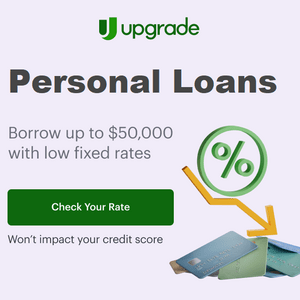 The average amount of debt carried over from month to month by the American consumer has increased significantly over time. Households carry an average of more than $16,000 in credit card debt, which can come with a hefty monthly payment. The total debt held by Americans extends into the hundreds of billions, made up of credit cards, auto and personal loans, mortgage debt, and student loans.
The average amount of debt carried over from month to month by the American consumer has increased significantly over time. Households carry an average of more than $16,000 in credit card debt, which can come with a hefty monthly payment. The total debt held by Americans extends into the hundreds of billions, made up of credit cards, auto and personal loans, mortgage debt, and student loans.
While debt is a means to an end for many, it can cause a feeling of overwhelm and frustrating when attempting to pay balances down. Here are a few tips for tackling debt in a strategic way, including which account to focus on first.
High-interest Debt
If you have several debt accounts, deciding which to pay off first is often confusing. Countless strategies, such as the snowball method for paying off debt, claim to be the go-to for debt payoff, but not every method works the best for every consumer. It typically makes the most sense to focus on the highest interest rate debt first, as this will save you the most money in the long run. However, many people prefer the snowball method for paying off debt. With this method, debtors pay off the lowest balances first rather than their higher interest rate accounts.
For most consumers, the highest interest rate debt comes in the form of a credit card balance. Although the average credit card interest rate hovers around 15%, most Americans have cards with rates exceeding 20%. When a balance is carried over from month to month, interest charges accumulate, making it feel as though the debt may never go away. Working toward a payoff plan that focuses on high-interest cards first is often a safe bet because of these ongoing charges.
But paying off credit card debt has another benefit, above and beyond cost-savings. Borrowers who have credit card balances near their credit limits experience a drag on their credit score. This is because credit score models all take into account the percentage of available credit a consumer has. The higher the balance in comparison to the credit limit, the lower your credit score will be.
You want to aim for a credit utilization of no more than 30% on revolving accounts, like credit cards, to keep your credit score in check. Focusing on paying off credit cards first helps in this realm, more so than paying off loans or other debts quickly.
Use our debt payoff calculator to help you determine how much money it will take each month to pay down each accounts debt by your goal date.
Next Up – Installment Loans
Once credit card balances are paid down to either a lower utilization ratio or to a zero balance, you can shift focus to the next highest interest rate debt. For some, this is student loan debt, which can range from 3.5 up to 8.5% on relatively large balances.
Refinancing your student loan debt to secure a lower interest rate may be a viable option, but consider the consequences for doing so before making a decision. Auto loans and mortgage loans often have the lowest interest rate, putting them squarely at the bottom of the list when it comes to expediting pay off.
However, focusing on installment loans rather than credit cards may be beneficial for some borrowers, regardless of the interest rate. This is typically the case when paying down an installment loan paves the way for a new loan in the near future, like an auto loan or mortgage. Consider your financial goals carefully, as well as your ability to stick to a repayment strategy, before selecting one method over another.
Maintaining a Budget
No matter which debt you focus on first, it is always necessary to create a budget that offers enough flexibility to speed up paying down debt while also contributing toward other financial goals or needs.
For instance, if you have no emergency savings established, be sure to set aside some money each month to build up this bucket. This may mean putting slightly less toward your debt service each month, but having a financial cushion of savings helps keep you out of trouble with debt in the future.


